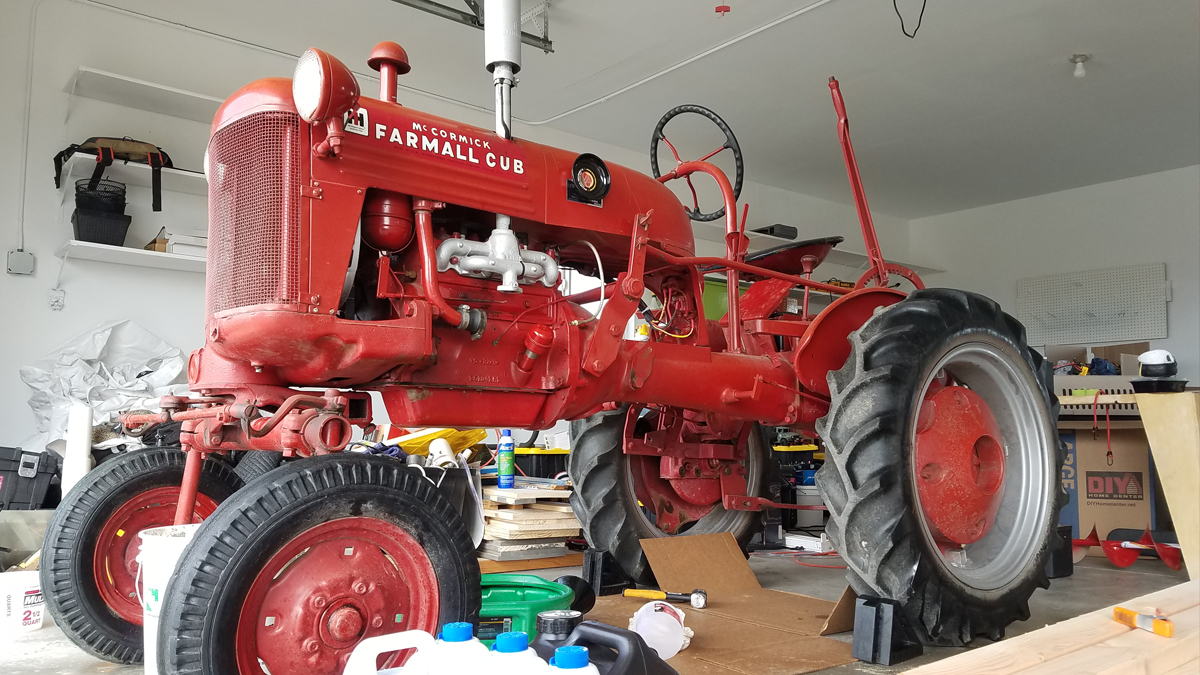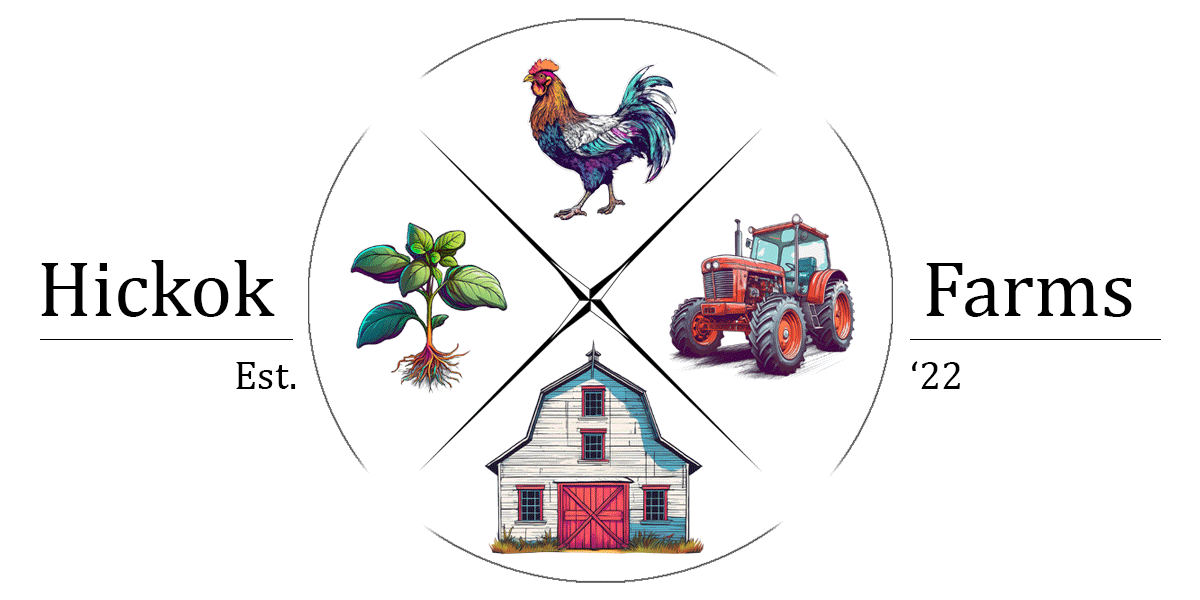
What started off as a search for a practical garden tractor for our 4-acre property turned into purchasing a 74-year-old Farmall Cub, which needed a little TLC to get running. We relocated back to Wyoming, to have a lifestyle that aligned more closely with our values. So we needed something capable of mowing, subsoiling, cultivating, and plowing, tilling, and hauling things around our 4 acres.
Our search started with modern and lightly used tractors. We heavily considered capability, cost, size, and depreciation, and didn’t initially consider a vintage tractor, because its just not what came to mind first. A small modern tractor, new or used that is capable of performing all the tasks on your small farmstead, will set you back 10k to 15k dollars at a minimum, and won’t include many of the implements you will need for all of your farming tasks. Add a 3-point subsoiler, mower deck, snow plow, cultivator, or any other handful of implements, and you can easily expect to invest a minimum of 25k to 30k in the tractor and implements alone.
The next thing to consider is a trailer for transportation. Perhaps you can have the tractor delivered by a dealer, and you never plan to have it leave the property, but it’s probably a more realistic expectation, that you will need to transport your tractor, or if you buy used, you can be pretty sure you are going to have to pick it up. We already had a utility trailer with a 2300 lbs load capacity, which eliminated a few larger options, like a smaller skid steer right away.
If we were to invest in an even larger utility trailer, just for a tractor, larger than the one we already had, it would cost in excess of 3000 dollars. A larger trailer and a larger tractor also require a very capable truck, so as not to destroy a daily driver. If you had to consider a new truck <em>right now</em> you can expect to add a a lot more money to the cost of purchasing and transporting a tractor.

The cost to purchase, a new trailer to transport a larger modern tractor very quickly started looking like a hundred thousand dollar investment and not a ten thousand dollar investment, which didn’t seem to make economic sense for a 4-acre property. While we were searching classifieds we saw an old Farmall Cub that was only a few hours away. It had not run in at least a few years, so I had a few conversations with the owner, to get a little more information about it and figure out what I’d be getting into.
The Farmall Cub had been single-family owned since it was first purchased in 1949, used, maintained pretty well, and then barn kept when it was retired from normal operations. For years it was turned on and run, maybe occasionally driven around a property to operate a mower deck, but ultimately ended up in a barn and kept because of sentimentality. Unfortunately, all the implements that went with it were sold off because they took up space.

Although the tractor looked great from being barn kept, because it was not running, the lack of attachments, dry rot tires, and the fact that it did not have a hydraulic touch control system installed on it, we made a significantly lower offer and explained our reasoning. After some back and forth, we talked the owner down to a price that we felt was a more economically wise investment for our small acreage. I welded a winch to the trailer and drove the three and a half hours to inspect it, and hopefully pick it up.
We inspected the engine block and all other cast parts for stress cracks or fractures, we went through other mechanicals, made sure the engine was not seized, made the call, and winched it onto the trailer. Once back at the house, we rolled it into the garage. Over the next week, we proceeded to flush and replace all fluids. We purged and cleaned fuel lines, replaced an intake hose, tightened up steering slack, and tightened up the throttle rocker shaft. We also cleaned and rebuilt the carburetor <em>4 times</em> before we were finally able to keep her running with a steady purr.
We replaced the dry rotted front and rear tires, added a 3 point-to-quick-hitch linkage system, and a quick-hitch. Lastly, we also put a 3-point to 2” receiver hitch on it and picked up a Titan Attachments subsoiler, to get us started on projects right away, while we continue to work out other implement needs.
How much did it all cost us? We picked up the tractor for 2.2k, added another 500 dollars in tires, and it cost 600 dollars to set up a quick hitch system and a subsoiler. An entire fluid flush and replacement cost about 100 dollars, and the winch plus steel cost 160 dollars. We also spent another 50-ish dollars on carburetor gaskets and replacement parts, and plenty of grease. For just over 3500 bucks, we ended up with a very capable, perfectly sized tractor for our property, and we added some value and versatility to our existing trailer. We are able to pull the Farmall cub on a trailer with a small V8 Dodge and didn’t need a larger trailer, as the tractor with wheel weights weighs in at less than 2000 lbs. By comparison, 3500 bucks is about what it would have cost to get a new trailer.
Buying a vintage tractor may not be a wise investment if you aren’t mechanically inclined. You need to know what to look for when buying, and have a skill set to be able to diagnose and repair things, otherwise, you may just end up with a yard art. In general, you probably shouldn’t invest in a tractor that is not running, for more than what you are willing to lose completely, because it’s essentially a gamble if you don’t get to hear it and see it running. For our needs, the 48 Farmall Cub is nearly perfect, and we are constantly searching for implements to make it an even more capable tool for our little farm.
